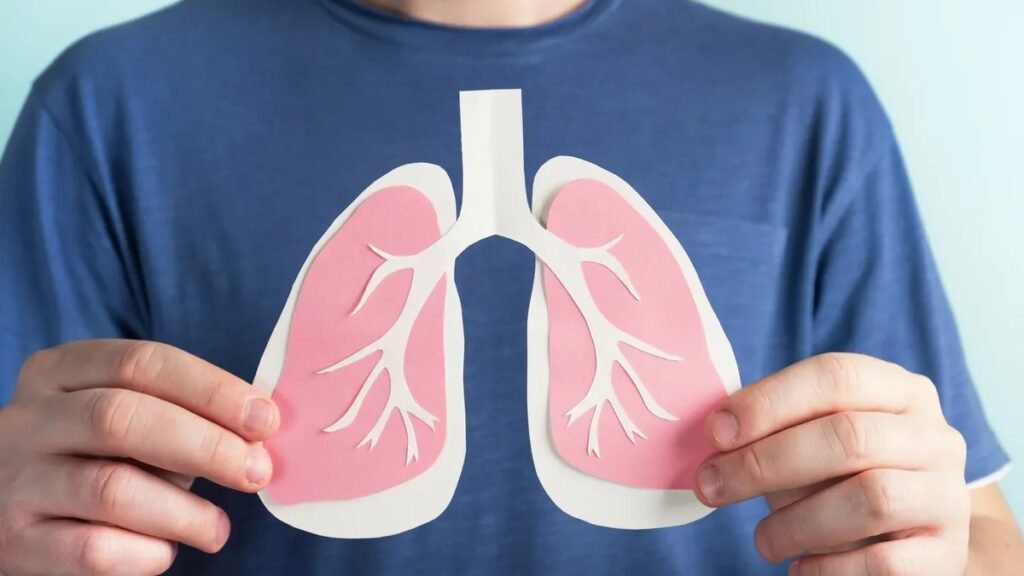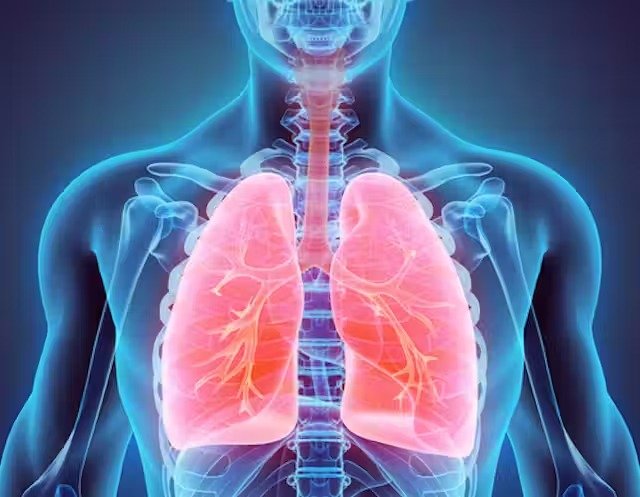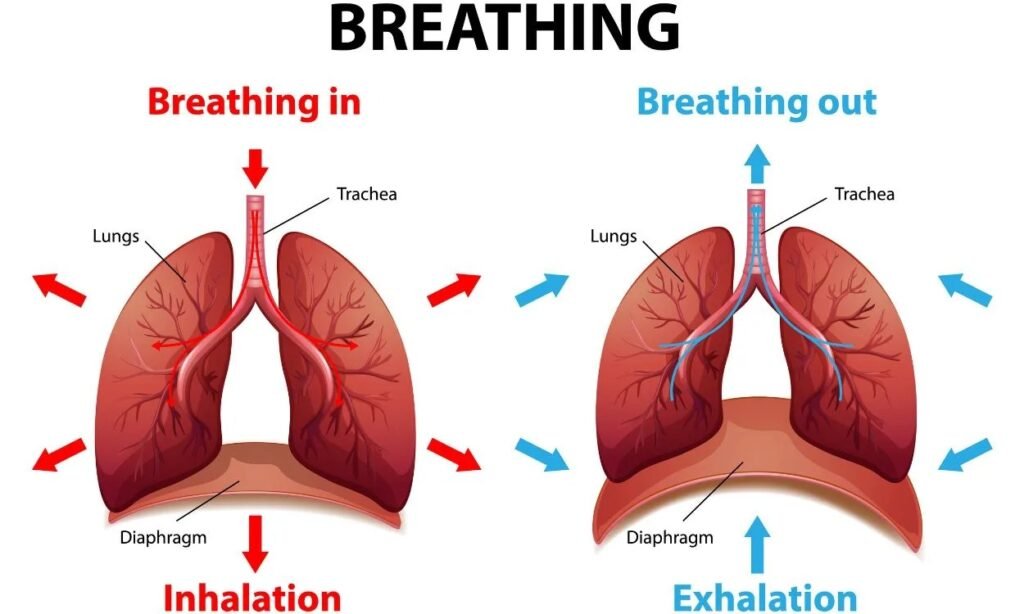
The lungs are vital organs that help you breathe. They take in oxygen and remove carbon dioxide from your body. There are two lungs, and they are located in the chest. Air travels through the nose, down the trachea, and into the lungs, where oxygen is exchanged for carbon dioxide.
Main Function:
The main function of the lungs is to bring oxygen into the body and remove carbon dioxide. When you breathe in, oxygen travels into the lungs, where it enters the blood. The blood carries oxygen to the rest of the body. When you breathe out, the lungs get rid of carbon dioxide, a waste product from the body’s cells. This process helps keep your body healthy and ensures it has the oxygen needed to function properly.
Keep Your Lungs Clean and Protected:

- Don’t smoke and avoid secondhand smoke.
- Exercise regularly to strengthen your lungs.
- Keep indoor air clean by ventilating your home and avoiding harsh chemicals.
- Stay away from pollution and wear a mask if needed.
- Drink plenty of water to keep your lungs hydrated.
- Eat a healthy diet with fruits and vegetables to support lung health.
Foods to Boost Lung Health: - Leafy greens
- Berries
- Nuts and seeds
- Garlic and onions
- Tomatoes
- Apples
Signs of Lung Problems:
1.Difficulty breathing, especially during exercise or at rest.
2.Persistent cough or coughing up blood.
3.Chest pain or tightness.
4.Wheezing or noisy breathing.
How the Lungs Work:

- Inhale: When you breathe in, the diaphragm contracts and the chest expands. Oxygen-rich air fills the lungs, and oxygen diffuses into the bloodstream through the alveoli.
2.Exhale: When you breathe out, carbon dioxide, a waste product from the body’s cells, is expelled from the blood into the alveoli and then out through the nose or mouth.

